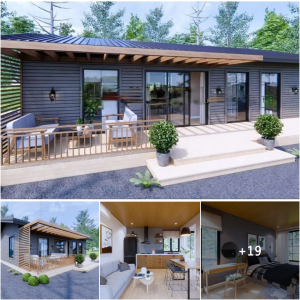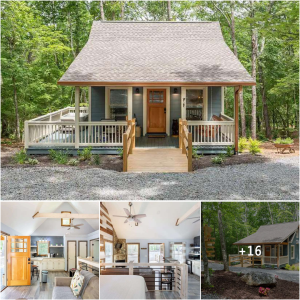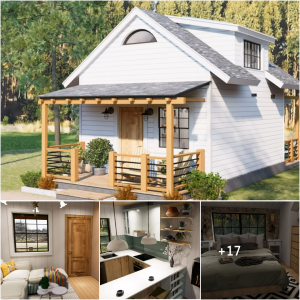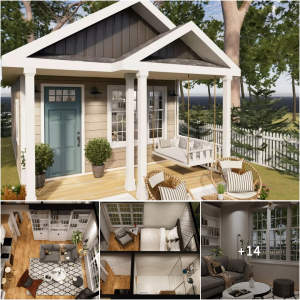:strip_icc():format(webp)/cdn.cliqueinc.com__cache__posts__261667__low-maintenance-plants-261667-1530116813947-main.700x0c-ea8763224e824c9fa914de71104b4d9f.jpg)
Plants make any room look better—just look at shelter magazine features for proof. But keeping your greenery alive is easier said than done. As a self-professed “black thumb” who has killed more than one succulent in her day, I’m saying this from first-hand experience. So which plants are resilient enough to survive days (maybe weeks) of neglect? I turned to a plant expert to find out.
“When shopping for low-maintenance plants, stick to the classics,” suggests Madeline Sachs, in-house plant care expert at Greenery NYC. “There is a good reason your local garden store, online plant shop, or garden center carry many of the same plant varieties. The plants you see often—the most common ones—are species that have been cultivated to thrive in indoor environments. Going with tried-and-trusted varieties like pothos, sansevieria, or aglaonema and personalizing [them] with a unique potting vessel or plant stand is a great way to ensure long-term lushness that matches your space.”
Ahead, 25 low-maintenance plants that are nearly impossible to kill—along with handy care tips.
ZZ Plant
:strip_icc():format(webp)/zzplant5-4c19f4b9d4944d1ebf52f03e0c48c146.jpg)
- Botanical Name: Zamioculcas zamiifolia
- Sun Exposure: Low to bright, indirect light
- Soil Type: All-purpose potting soil
- Soil pH: 6.0 to 7.0
The ZZ plant is a popular neglect-proof houseplant and ideal if you’re looking to incorporate a touch of the tropics in your space.
“Less is more when it comes to this plant,” says Sachs. “Water only when the soil is dry all the way through—every two weeks, give or take. It can tolerate pretty much any level of indirect light.”
:strip_icc():format(webp)/cdn.cliqueinc.com__cache__posts__261667__low-maintenance-plants-261667-1530116996516-product.700x0c-280a8acbee3840908abab4b188a7b5b5.jpg)
Pilea Peperomioides
:strip_icc():format(webp)/pilea1-13-21-baa808114cfd40239c0fec144d7a5a06.jpg)
- Botanical Name: Pilea peperomioides
- Sun Exposure: Bright, indirect light
- Soil Type: Well-drained potting soil
- Soil pH: 6.0 to 7.0
The cute, rounded leaves of Pilea peperomioides make it an easy conversation starter and popular choice for plant parents everywhere. Its compact, whimsical shape makes a great side table, nightstand, or windowsill addition.
Aside from plenty of indirect light, this plant requires very little in the way of care—water when the soil has completely dried out and repot every couple of years.
:strip_icc():format(webp)/pilea-product2-c733ff3f869545b18e4be63155eb62da.jpg)
Umbrella Plant
:strip_icc():format(webp)/umbrellaplant-1c1c1da31c644f3ca82bfebcb68573da.jpg)
- Botanical Name: Schefflera amate
- Sun Exposure: Bright, indirect light
- Soil Type: Peat moss-based potting mix
- Soil pH: 6.0 to 6.5
Given its height and large, dark leaves, an umbrella tree can really add that touch of drama to any space. “This tropical beauty can grow up to eight feet tall indoors!” Sachs points out.
“It prefers medium to bright indirect light,” she advises. “Allow the soil to dry between waterings.”
:strip_icc():format(webp)/umbrella-product-fba720c69a974b3ba568b8a4a4319dd6.jpg)
Air Plant
:strip_icc():format(webp)/airplant-getty-d58c57532d5341af8f2e16d34252c8ef.jpg)
- Botanical Name: Tillandsia
- Sun Exposure: Bright, indirect light
- Soil Type: Epiphytic
- Soil pH: 4.0 to 8.0 (Water pH)
No easy-care list would be complete without the air plant. This epiphytic plant doesn’t need to be planted in soil or even kept in water. Display yours in a globe, pot, hanging vase, or anywhere really, as long as it gets indirect light.
Water air plants by submerging them in water for a half an hour or so once a week. Let them dry out on a towel for a few hours after watering.
:strip_icc():format(webp)/airplantsproduct-95d3993264164461a631e7b9a81ffca5.jpg)
Neanthe Bella Palm
:strip_icc():format(webp)/palm-fe39b066aea649fda065912383470551.jpeg)
- Botanical Name: Chamaedorea elegans
- Sun Exposure: Bright, indirect light
- Soil Type: Well-drained potting mix
- Soil pH: 5.1 to 7.5
“Don’t be fooled by the frilly leaves of this little palm,” says Sachs. “It’s more durable than most frilly plants.” And if you’re looking to bring the tropics to you, there’s nothing that screams tropical quite like a palm.
“It prefers medium indirect light and to be watered once every seven to 10 days,” advises Sachs.
:strip_icc():format(webp)/parlorpalmproduct-35dee4912a6c4ca48fb8879f855f960c.jpg)
Chinese Evergreen
:strip_icc():format(webp)/chineseevergreen9-14-20-84e4e9bf9d684560b305a8811f5f1e3b.jpg)
- Botanical Name: Aglaonema
- Sun Exposure: Low to bright, indirect light
- Soil Type: Well-draining potting soil
- Soil pH: 5.6 to 6.5
Aglaonema, or Chinese evergreens, come in all sorts of colors, shapes, and sizes—the sky’s the limit, really. What they all have in common, though, is how easy they are to care for.
These guys can adapt to low light conditions and like their soil just barely moist at all times. They can also be propagated and grown in water for a less-mess approach.
:strip_icc():format(webp)/chinese-evergreen-product-3380d82383924a6a958acadbb2697b74.jpg)
Spider Plant
:strip_icc():format(webp)/spiderplantandsnakeplant-a7fa0a1e3644455e9df1248d3b5c1d94.jpeg)
- Botanical Name: Chlorophytum comosum
- Sun Exposure: Bright, indirect light
- Soil Type: Well-drained potting soil
- Soil pH: 6.0 to 7.2
There’s a reason the spider plant is such a popular houseplant—it’s nearly impossible to kill and propagation is a cinch. The long, arching leaves (and trailing baby plants) look great in a hanging planter or anywhere else you want to put one.
Overwatering is one of the most common pitfalls when it comes to spider plants, so let the soil dry out completely between waterings.
:strip_icc():format(webp)/spider-plant-products-785f938f44f94c1aabc9850edc63e095.jpg)
Pothos
:strip_icc():format(webp)/pothos2-2cfe17fed9c043c3b37d42cce4430f91.jpeg)
- Botanical Name: Epipremnum aureum
- Sun Exposure: Low to bright, indirect light
- Soil Type: Well-drained potting mix
- Soil pH: 6.1 to 6.5
You’ve no doubt seen pothos before in an office, shop, or friend’s home—its proclivity for growing vines makes it a popular indoor choice. “This plant is fast growing, durable, and its trailing leaves add a pop of green to any space,” says Sachs.
As far as care goes: “Place it in low to medium indirect light, and water when the soil begins to dry—approximately once a week,” recommends Sachs.
:strip_icc():format(webp)/pothosproduct-9749f4ecb73644cc9586e410903d2e79.jpg)
Peace Lily
:strip_icc():format(webp)/peacelily-afef3c0ca737490d934e64c01181d36c.jpeg)
- Botanical Name: Spathiphyllum
- Sun Exposure: Low, indirect light
- Soil Type: Well-draining potting soil
- Soil pH: 5.0 to 6.5
If you have virtually nothing in the way of natural light, the peace lily will be your new best friend (or, you know, plant baby). This lush, leafy plant can survive on artificial light alone, but it will only produce flowers if given some natural light, so keep that in mind. They like to be watered once a week and spritzed often.
Bonus: Peace lilies are pros at filtering the air of toxins.1
:strip_icc():format(webp)/peace-lily-productansil-afc9b52eb01b41ab8d7d0105acc0634d.jpg)
Sansevieria Zeylanica
:strip_icc():format(webp)/snakeplant2-ae00730aa3e54acdba144f96f2a2398b.jpg)
- Botanical Name: Sansevieria zeylanica / Sansevieria trifasciata
- Sun Exposure: Low to bright, indirect light
- Soil Type: Well-draining cactus or succulent mix
- Soil pH: 4.5 to 7.0
The perfectly imperfect snake plant adds a cool-without-trying vibe to just about any space. “Also known as mother in law’s tongue, this variety has slightly darker leaves than the typical snake plant,” says Sachs.
Better yet, the snake plant is known for being hardy. “It likes to dry completely between waterings and prefers low to medium light,” advises Sachs. So, basically, dummy-proof.
:strip_icc():format(webp)/snakeplantproduct-4ee7aead72414a6a9b340d918cc3bcec.jpg)
Heartleaf Philodendron
:strip_icc():format(webp)/heartleafphilo2-a4e193a3c18d433f8c677af3671ae08d.jpeg)
- Botanical Name: Philodendron hederaceum
- Sun Exposure: Low to bright, indirect light
- Soil Type: Peat moss-based potting mix
- Soil pH: 6.0 to 7.0
Plants in the philodendron genus are generally regarded for their low maintenance and easy care, but none are so easy-going as the heartleaf philodendron. Although it’s easy to mistake for pothos, you’ll know it by the truly heart-shaped leaves.
Give your plant a bit of natural light and water every couple of weeks, and before you know it, you’ll be living in a jungle of vines.
If the vines of your heartleaf philodendron become unmanageably long, simply trim to your desired length and propagate the cuttings in water.
:strip_icc():format(webp)/heartleafproduct-bcd90e320474466688dfab551b7d8cfe.jpg)
Monstera
:strip_icc():format(webp)/Monstera10-19-20-facfe13497e048b7a572eabd5e52d275.jpg)
- Botanical Name: Monstera deliciosa
- Sun Exposure: Bright, indirect light
- Soil Type: Well-drained potting mix
- Soil pH: 5.5 to 7.0
“This is also called the ‘split leaf’ or ‘Swiss cheese’ plant,” says Sachs. But it definitely lives up to the name Monstera—with the right care, this plant has a tendency to grow wild in every direction, demanding attention.
“Water it when the top few inches of the soil are dry and keep it in medium to bright indirect light,” Sachs suggests. It also loves humidity, so aim to spritz the leaves once a week.
:strip_icc():format(webp)/monsteraproduct-6cf7408790044f95916d84cbce1b351e.jpg)
Aloe Vera
:strip_icc():format(webp)/succulentandaloe4-29-18-7a264bd69007403eb65fedf248d98ce3.jpg)
- Botanical Name: Aloe barbadensis Miller
- Sun Exposure: Bright, indirect light
- Soil Type: Cactus or succulent soil mix
- Soil pH: 7.0 to 8.5
Most of us have already experienced the benefits of aloe vera in the form of its skin-healing sap, but growing the plant itself has plenty of merits too. For one, it adds a subtle Southwestern vibe to any space, but did you know that aloe leaves also help remove formaldehyde from the air you breathe?2
Aloe vera is a succulent, which means it’s pretty low maintenance. Give it plenty of bright light and water only once the soil has completely dried out.
:strip_icc():format(webp)/aloe-vera-product2-d9c77d3cd05d42fb82488780e39e84f3.jpg)
English Ivy
:strip_icc():format(webp)/ivy5-20c1e4436a0b4c20b4151ed8635d6ce7.jpg)
- Botanical Name: Hedera helix
- Sun Exposure: Partial shade to bright, indirect light
- Soil Type: Standard potting soil
- Soil pH: 5.5 to 6.5
Yes, the same English ivy that crawls over stately brick buildings can be grown indoors, although there are indoor-specific varieties you should opt for. The delicate vines can add a touch of elegance to any space, no matter your design aesthetic.
English ivy will thrive in just about any light. It prefers soil to be just barely moist at all times and to have regular mistings. Train the vines up a trellis, basket handle, or tall shelf to really take advantage of this climber.
:strip_icc():format(webp)/English-ivy-product-b99c1db07ce746518151b9897c437f2b.jpg)
Bird of Paradise
:strip_icc():format(webp)/birdofparadise1-28-20-4aae0fdcb2974251b4307c75265e00a0.jpg)
- Botanical Name: Strelitzia reginae
- Sun Exposure: Low to bright, indirect light
- Soil Type: Well-draining potting mix
- Soil pH: 5.5 to 7.5
“Known for its fan-like display of large tropical leaves, the bird of paradise can be found anywhere between three to eight feet tall,” says Sachs. In other words, if drama and jungle-like are on your wish list, this plant ticks all the boxes.
While the bird of paradise tolerates lower light conditions, it won’t produce its signature flowers without proper care and bright, indirect light. According to Sachs, “It prefers a high light environment and a good amount of water. Allow the top few inches of the soil to dry between waterings.”
:strip_icc():format(webp)/cdn.cliqueinc.com__cache__posts__261667__low-maintenance-plants-261667-1530116999143-product.700x0c-708be9d9169847d69df02cdf34b6b718.jpg)
Cactus
:strip_icc():format(webp)/cacti-succulents-272be297bc644779949fa9664116bfff.jpeg)
- Botanical Name: Cactaceae
- Sun Exposure: Bright, indirect light to full sun
- Soil Type: Well-draining cactus or succulent mix
- Soil pH: 5.0 to 6.5
For forgetful plant parents and those who travel a lot, a cactus will love you all the same. All they really need is a sunny window to bask in and water once every few weeks. Plus, cacti come in all sorts of shapes, sizes, and colors to fit your space.
Just be careful when handling these guys to avoid getting pricked. Protect yourself by wearing nitrile-dipped gloves, covering the spines with a towel, or using tongs to gently grasp your cactus.
:strip_icc():format(webp)/cactus-product-a0abb45c937a4d95b00429bf36235d76.jpg)
Rattlesnake Plant
:strip_icc():format(webp)/rattlesnakeplantgetty-96de88051a8b42699bd5256529a64b84.jpg)
- Botanical Name: Calathea lancifolia
- Sun Exposure: Bright, indirect light
- Soil Type: Well-drained potting mix
- Soil pH: 5.5 to 6.0
This striking species is a member of the colorful prayer plant family. “Calathea lancifolia is also known as a rattlesnake plant for the unique pattern of green and purple on the elongated leaves,” explains Sachs.
Like most prayer plants, the rattlesnake plant can be a touch picky when it comes to care, but don’t let that scare you off. “Keep the soil slightly moist by watering once to twice a week, and place it in a spot where it will receive bright, indirect light,” Sachs says. The colorful drama this jungle plant offers is well worth the effort.
:strip_icc():format(webp)/cdn.cliqueinc.com__cache__posts__261667__low-maintenance-plants-261667-1530116998872-product.700x0c-90fd4965cc47421b859cf199f45597e5.jpg)
Jade
:strip_icc():format(webp)/jadeetc-ab2b7c74c61b4e588b7765fceb1c0b77.jpeg)
- Botanical Name: Crassula ovata
- Sun Exposure: Bright, indirect light
- Soil Type: Cactus or succulent potting mix
- Soil pH: 6.1 to 6.5
For a little extra luck in the financial realm, add a jade plant to your collection. These easy-care succulents are thought to attract wealth and have great feng shui.
Place your plant in a sunny, south-facing window if possible. With plenty of bright light and thorough watering when the soil has mostly dried out, jade will slowly grow into an attractive, bonsai-like shape.
:strip_icc():format(webp)/jade-product-2-a11d642ed9844f00a5af9fe37511d617.jpg)
Cast-Iron Plant
:strip_icc():format(webp)/Cast-Iron-Plant-GettyImages-98359817-5935974f5f9b589eb4fd2370.jpg)
- Botanical Name: Aspidistra elatior
- Sun Exposure: Full shade
- Soil Type: All-purpose potting mix
- Soil pH: 5.5 to 6.5
This hardy plant is about as indestructible as its namesake. Along with being easy to care for, it’s resilient to extreme temperatures, insects, and disease.
The cast-iron plant is one of the few that can truly thrive with almost no natural light and is drought tolerant. Place it several feet from a window and water only when the soil has dried out.
Like other ground-cover plants, you can easily propagate your cast-iron plant by division. Carefully separate at least two leaves from the main body with roots included and plant in fresh soil.
:strip_icc():format(webp)/cast-iron-plant-product-1e666da16e5a43adb9f66c3ab3f21b67.jpg)
Bird’s Nest Fern
:strip_icc():format(webp)/birdsnestfern-48b1f043052d46539679e918f18db5ca.jpeg)
- Botanical Name: Asplenium nidus
- Sun Exposure: Medium to bright, indirect light
- Soil Type: Well-draining potting soil
- Soil pH: 5.0 to 5.5
If you love the look of a lush fern but don’t think you have the patience for it, you’re in luck. The bird’s nest fern gives you that foresty feel while still being low maintenance. Its wavy, arcing leaves look equally attractive in a tabletop pot or hanging planter.
“Easier than most ferns, this bright green beauty likes medium to bright indirect light and watering once to twice a week,” advises Sachs. “The soil should always be slightly moist.”
:strip_icc():format(webp)/birds-nest-product2-c893f66b8077406caca0d482f9d2adc7.jpg)
Money Tree
:strip_icc():format(webp)/moneytree3-990f6afd935d4389ac4af39004db3e3f.jpg)
- Botanical Name: Pachira aquatica
- Sun Exposure: Bright, indirect light
- Soil Type: Well-draining, sandy peat-moss soil
- Soil pH: 6.0 to 7.5
Add some green to your space (and maybe your wallet) with a money tree, thought to bring you luck and financial fortune. More importantly, though, they can bring the drama of a tall tree to your space with minimal effort on your part.
Place your money tree in front of a bright window (but away from drafts), water when the top few inches of soil have dried, and watch it grow. Repot every couple of years to keep up your tree’s momentum.
:strip_icc():format(webp)/money-tree-product-749a7f4f1fa249f2b19ab61ff3d1216e.jpg)
Sansevieria Cylindrica
:strip_icc():format(webp)/roundcylindricalsnakeplant-643b35eca6ef42d2b54dddd3fa7d034b.jpeg)
- Botanical Name: Sansevieria cylindrica
- Sun Exposure: Low to bright, indirect light
- Soil Type: Well-draining, sandy peat-moss soil
- Soil pH: 4.5 to 7.0
“Here is another variety of snake plant,” says Sachs. Sansevieria cylindrica is a good example of a new take on an old favorite. “Its plump, spear-like leaves resemble bamboo,” she continues.
Like the classic snake plant, this variation is fairly difficult to kill. For optimum health, “Keep it in medium to bright, indirect light, and let the soil get fully dry between waterings,” suggests Sachs.
:strip_icc():format(webp)/cylindricalsnakeplantproduct-c35984264dc342cbad350cdd15d0354d.jpg)
Inch Plant
:strip_icc():format(webp)/inchplant-wanderingjew-others2-3-19-27f39eb38a794762bd8d295b2d86cb1d.jpg)
- Botanical Name: Tradescantia zebrina
- Sun Exposure: Medium to bright, indirect light
- Soil Type: All-purpose potting soil
- Soil pH: 6.1 to 7.8
The inch plant sets itself apart from other trailing vines with its signature striped leaves. This member of the Tradescantia family is also hardy and fast growing—perfect for those with a black thumb.
To keep your inch plant’s leaves looking vibrant, you’ll want to give it medium to bright, indirect light, though it will tolerate lower light if necessary. Let the soil dry out between waterings.
:strip_icc():format(webp)/inch-plant-product-54be7637a150420b98a7c09fca4da96d.jpg)
Dracaena Lisa Cane
:strip_icc():format(webp)/corntree11-16-20-2ad443c3dc2f458c83f4c7ffc1cefae8.jpg)
- Botanical Name: Dracaena lisa
- Sun Exposure: Medium to bright, indirect light
- Soil Type: Well-draining potting soil
- Soil pH: 6 to 6.5
“This is a great low to medium light tree option for your home or office,” says Sachs. “The leaves of the Dracaena lisa cane are sleek, slender, and dark green.” Perfect for making a statement with little fuss.
Dracaenas are known for their dramatic height (up to six feet indoors) and easy upkeep. Yours will grow best and fastest in bright, indirect light. “Water it once every seven to 10 days,” Sachs suggests.
:strip_icc():format(webp)/cdn.cliqueinc.com__cache__posts__261667__low-maintenance-plants-261667-1530116998631-product.700x0c-8055f408e7bd42458ba84d8a9258f59a.jpg)
Ponytail Palm
:strip_icc():format(webp)/ponytailpalm-f37ea0bfc4d1461484611de1a03c46d4.jpeg)
- Botanical Name: Beaucarnea recurvata
- Sun Exposure: Bright, indirect light
- Soil Type: Sandy, free-draining soil mix
- Soil pH: 6.5 to 7.5
The ponytail palm—so named for its long, flowing leaves—is a great choice if you don’t have much vertical height to work with. This tropical dwarf demands attention without needing too much space.
Believe it or not, this palm is actually a succulent. As such, it likes plenty of bright light and handles drought with ease. Overwatering is often the downfall of this plant, so go easy with the watering can.





